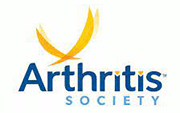The Arthritis Newsletter
Spring 2012The Voice of Mary Pack lives on through the Vancouver Community Group and Members of Beta Sigma Phi
Written by: Laura Mackenrot
It’s about your future quality of life. The RDSP is a long-term savings plan that became available in 2008 to help Canadians with disabilities save for their financial futures. This method of saving is ideal for those with arthritis and other autoimmune disorders, those who are earning low incomes and those who are not able to make adequate investments to their RRSP. The RDSP is also beneficial for low-income earners receiving GIS benefits. The RDSP will not affect CPP (Canada Pension Plan), GIS (Guaranteed Income Supplement), or OAS (Old Age Security) benefits. The RDSP has incentives to encourage individuals and families to save money. The incentives include generous grants and bonds from the federal government.
A few facts:
- Contributions may be eligible for the Canada Disability Savings Grant (CDSG), which provides matching contributions of up to $3,500 annually until the end of the year that the beneficiary turns 49 ($70,000 lifetime limit).
- Additionally, the plan may also be eligible for the Canadian Disability Savings Bonds of up to $1000 per year for those with low incomes, up until the age of 49, with a lifetime maximum amount of $20,000.
- There is no annual contribution limit, but there is a lifetime limit of $200,000 for total contributions. Tax is deferred and income earned is tax-sheltered; ideal conditions if you receive a substantial inheritance or settlement.
- Additionally, the plan holder can give permission for friends and/or family to deposit money to contribute to the plan.
Examples:
- Depending on the income level, a person who starts an RDSP at the age of 29, contributing $125 per month for 20 years, could receive full grants and bonds totaling $90,000. Depending on their investment choices, at the age of 60, when mandatory withdrawals begin, they would have over $800,000. This certainly can be used to enhance their quality of life.
To Qualify:
You must:
- Be a Canadian resident
- Have a Social Insurance Number
- Be 59 years of age or younger
- Be eligible for the Disability Tax Credit. The Disability Tax Credit is a credit that a person gets if they are disabled. To apply for the Disability Tax Credit you need to get your doctor to fill out a special form and send it to Canada Revenue Agency (see link below).
So just think about it – can you really afford not to do it? To apply for the DTC, download the application form T2201 from the CRA website: Disability Tax Credit Certificate
*Laura Mackenrot is a financial expert for people with disabilities. Born with arthritis, she went on to receive her Bachelor of Commerce degree from UBC. After experiencing total vision loss since 2007, she has become the first blind woman to be licensed in both life insurance and mutual funds in BC.





















































